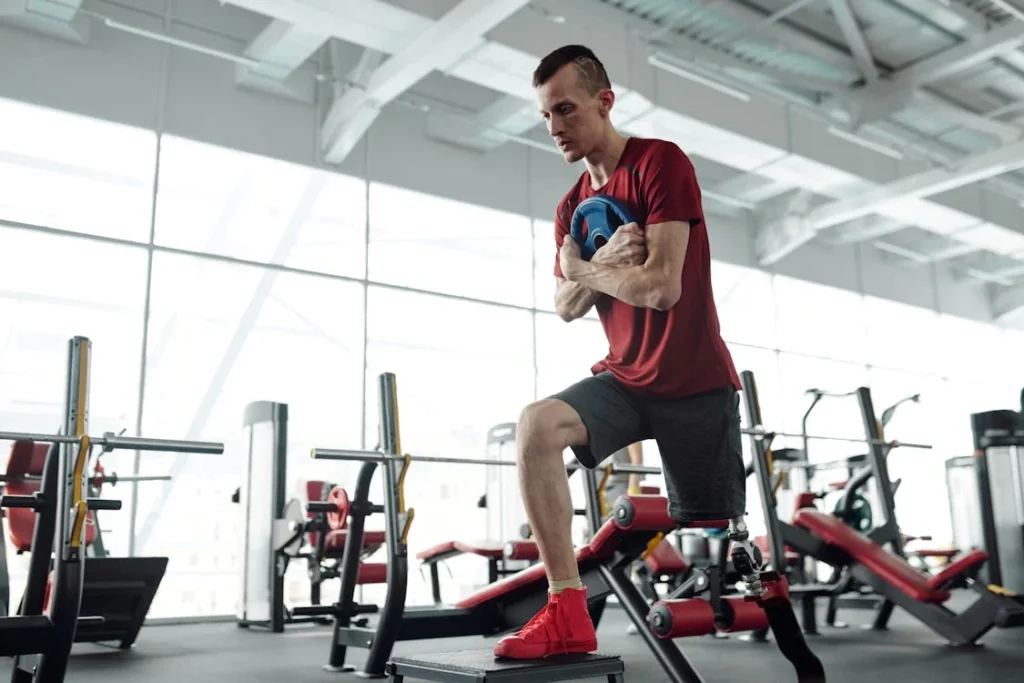After an amputation, the body begins a complex journey of healing. But it’s not just the physical wound that needs time — it’s the skin, muscles, nerves, and even the mind that go through a series of changes. One of the most important questions every patient and doctor faces is: “When is the right time to fit a prosthetic?” Get it too early, and you risk pain or complications. Wait too long, and the patient may lose hope or delay progress.
At Robobionics, we’ve seen how the right timing can shape the entire rehabilitation journey. In this article, we’ll guide you through the process of residual limb healing and help you understand when — and how — to take that first big step toward using a prosthetic limb.
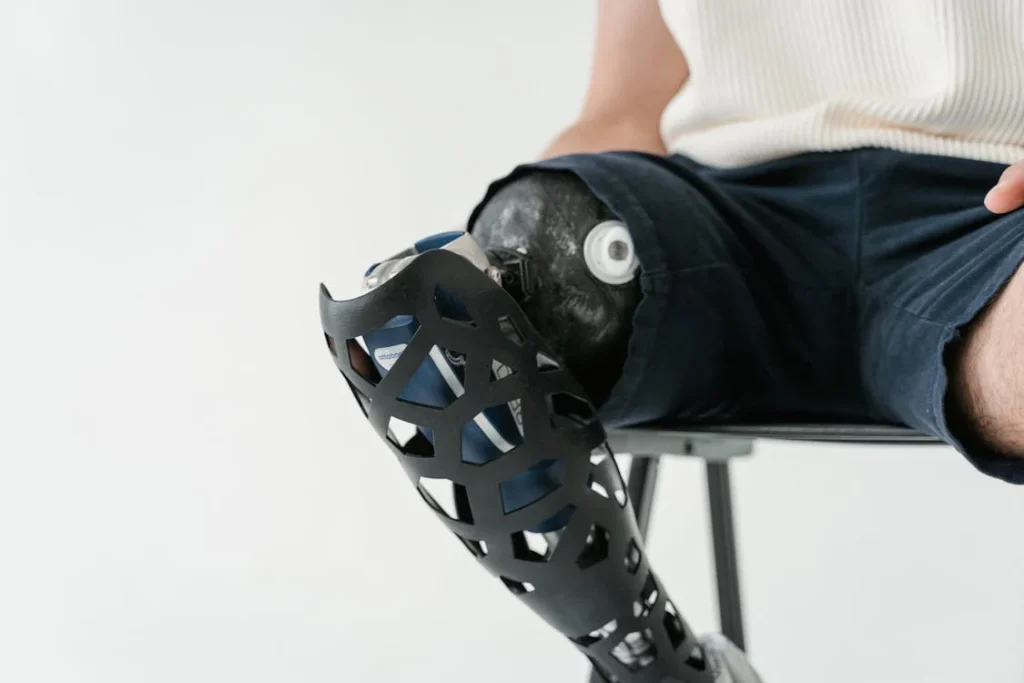
Understanding Residual Limb Healing
What Really Happens After Amputation?
When a limb is surgically removed, the body begins healing immediately — but it doesn’t follow a straight line. Healing happens in stages, and each stage must be respected.
In the first few days, the body’s priority is to stop bleeding, prevent infection, and close the wound. This early stage is critical, and doctors closely monitor the surgical site for signs of complications.
But even after the skin closes, healing is far from over. Deep beneath the surface, muscles are adjusting. Nerves, which were suddenly cut, start to react.
Many patients feel phantom limb sensations — tingling, pressure, or even pain in a limb that is no longer there. These are normal, but they can be emotionally challenging.
At the same time, swelling — known medically as edema — is still present. The limb is often wrapped with special bandages or shrinker socks to control this swelling.
Over time, the residual limb (also called a stump) begins to shrink in size and become more defined in shape. This shaping process is vital for fitting a prosthetic correctly later on.
The skin also changes. After amputation, the skin on the residual limb can become dry or overly sensitive. Sweating may increase due to changes in nerve signaling. All of these factors must be managed carefully, not only for comfort but for safe prosthetic use down the line.
Emotionally, this is a delicate time. Patients are dealing with physical discomfort and mental adjustments. They may feel pressure to recover quickly, especially if they’re eager to return to work, family life, or daily activities.
But rushing this stage can lead to poor outcomes. The key is education — helping patients understand that proper healing takes time and that each step prepares them for a successful prosthetic journey.
What many don’t realize is that the healing of a residual limb is not just about waiting — it’s about active preparation. Massage therapy, muscle exercises, proper hygiene, and gentle movement all help the limb become stronger and more adaptable.
At Robobionics, we encourage patients to see this stage not as a delay, but as training. It’s the foundation for everything that comes next.
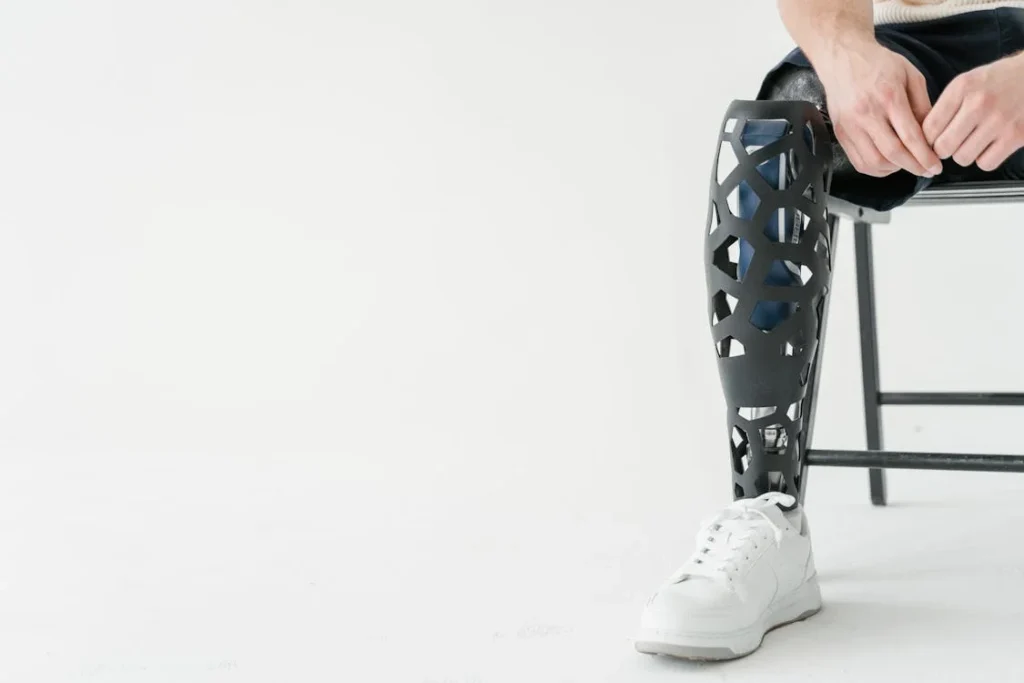
The Importance of Limb Maturation Before Fitting
Why You Shouldn’t Rush to Wear a Prosthetic
Many people assume that once the surgical wound is closed, they’re ready for a prosthetic. But that’s a common misunderstanding. In reality, just because the skin has healed doesn’t mean the limb is ready to support a prosthesis.
The term professionals use is “limb maturation” — and it’s one of the most important parts of post-amputation care.
Limb maturation means that the residual limb has not only healed on the outside but has also stabilized on the inside. It must become strong enough, stable enough, and shaped well enough to handle the pressure of a prosthetic socket.
This process usually takes weeks, and in some cases, months.
One of the main things we look at is swelling. In the early days after surgery, the limb is swollen and soft. If a prosthetic is fitted during this stage, it may not fit well.
As the swelling reduces and the muscles adapt, the shape of the limb changes. If a socket was made during the swollen stage, it would quickly become too loose, leading to instability or even injury.
Another key factor is skin condition. Skin on the residual limb is often very delicate after surgery. If it’s exposed to friction too early — which happens when wearing a prosthetic — it can break down, blister, or get infected.
This creates setbacks that are not only painful but emotionally discouraging for the patient.
Muscle strength also matters. The remaining muscles must be trained to support balance and movement. Without this, wearing a prosthetic can feel tiring or frustrating. That’s why physical therapy during this waiting period is crucial. It prepares the limb for load-bearing and motion.
At Robobionics, we use this period to start pre-prosthetic training. That includes stump desensitization, mirror therapy to reduce phantom pain, and light exercises to build strength. By the time the limb is fully matured, the patient is not just ready physically — they’re confident emotionally too.
Some modern systems offer adjustable, interim prosthetics to help bridge this gap. These are not permanent solutions, but they provide early mobility while the final limb continues to mature. When used correctly, they offer both motivation and training without compromising healing.
The lesson is clear: healing isn’t a race. Rushing into a prosthetic too soon can do more harm than good. But with proper timing, preparation, and support, the fitting process becomes smoother, safer, and far more successful.
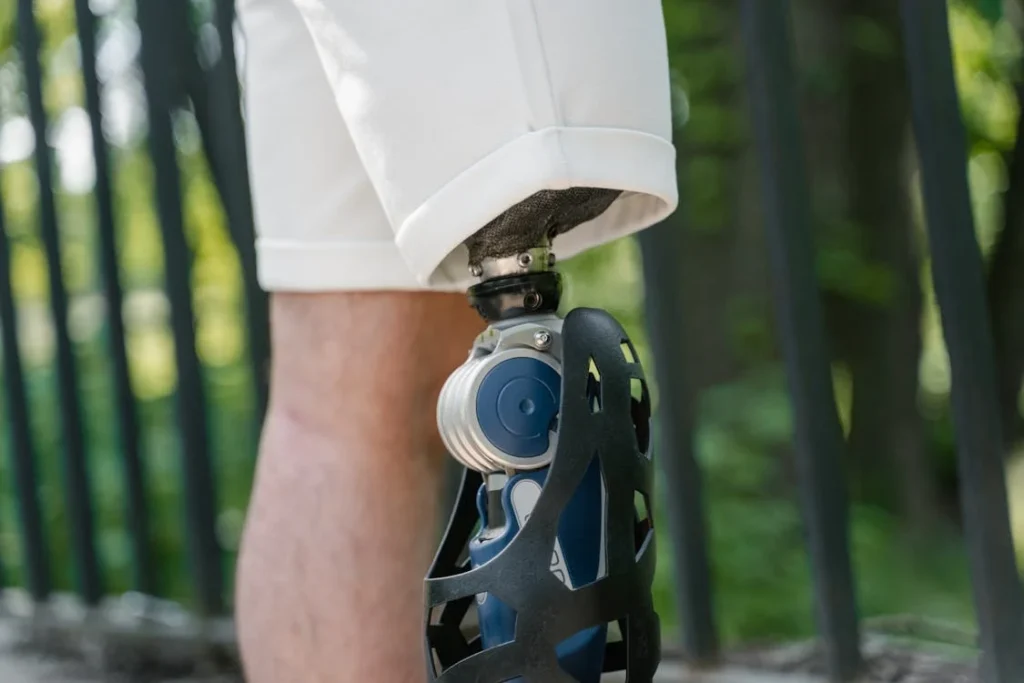
How to Know When Your Residual Limb Is Ready
Listening to the Body: Signs of Physical Readiness
One of the most common questions amputees ask is: “How will I know when I’m ready for a prosthetic?” While the answer is different for every person, there are key signs that suggest your residual limb is prepared for the next stage.
It’s important to pay close attention to these signs, as they guide both the patient and the care team toward a safe and successful fitting.
The first sign is consistent wound healing. The incision site should be completely closed, with no scabs, open areas, or signs of infection.
Any redness, unusual swelling, or discharge could indicate a problem and must be addressed before moving forward. The skin should look healthy and feel stable — not fragile or sore to the touch.
The second sign is reduced swelling. As the limb heals, swelling gradually decreases. This is why many patients wear compression garments or shrinker socks — they help the limb take on a more stable shape.
Once the limb size becomes steady (not changing every few days), that’s a good indication it’s close to ready for prosthetic measurement and fitting.
Limb shape also matters. A rounded or conical shape (narrower at the end) is ideal for prosthetic fitting. If the limb is irregular, very bulbous, or has uneven tissue areas, more shaping work may be needed.
This can be done through gentle massage, bandaging techniques, or targeted physical therapy.
Sensitivity is another factor. In the early days, even the slightest touch might be painful. Over time, that hypersensitivity should reduce.
A properly desensitized limb can handle light pressure and friction — which are both common when using a prosthetic. Simple exercises like rubbing the limb with cloth or applying gentle pressure help prepare the skin and nerves.
Muscle tone and balance also play a big role. If the muscles around the residual limb are weak, they won’t support the prosthetic well. The body needs time to adjust to new weight distributions and posture changes.
Exercises that improve hip strength, core stability, and back muscles are essential during this stage. They prepare you for walking, standing, and navigating different surfaces safely.
A major sign of readiness that often gets overlooked is emotional stability. If you feel excited (or at least willing) to try using a prosthetic — and you’re not overwhelmed by fear or anxiety — that’s a strong emotional signal that you’re mentally ready for the next step.
At Robobionics, we encourage patients to have regular check-ins with their prosthetist and surgeon during this time. Each visit helps assess progress, track healing, and make adjustments.
Fitting a prosthetic is not a one-day event — it’s a process. The clearer the signs, the smoother that process will be.
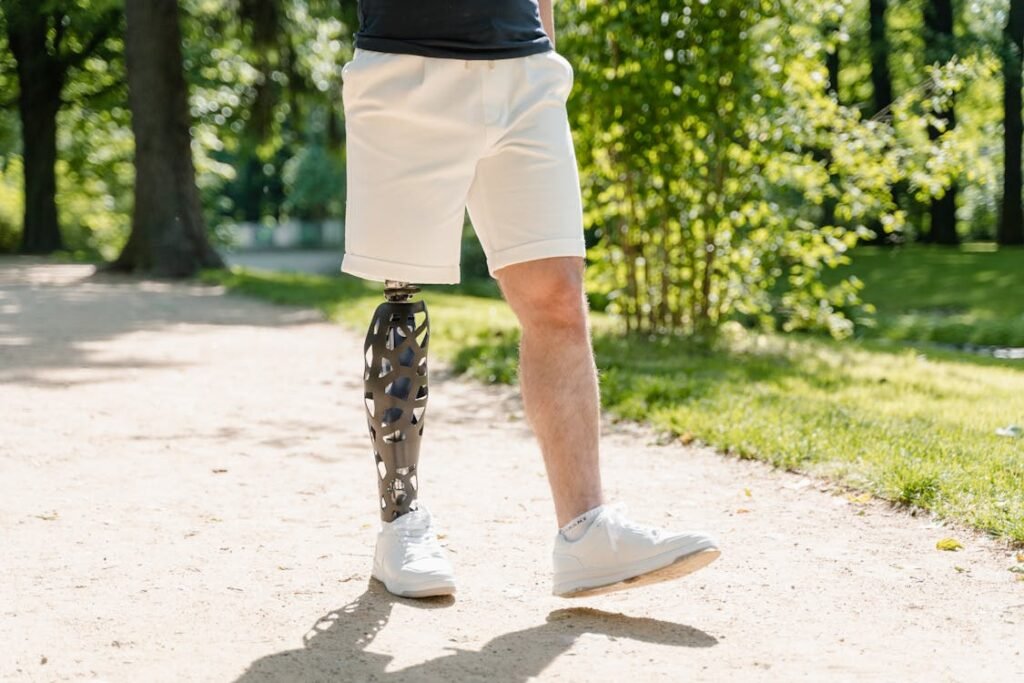
The Emotional Side of Timing
Healing the Mind as the Body Prepares
It’s easy to focus only on the physical aspects of limb loss — after all, wounds, stitches, and swelling are visible. But beneath all that is an emotional healing process that takes just as much time and care.
The right time to fit a prosthetic isn’t just about what the body can handle — it’s also about what the mind is ready to accept.
After amputation, many people go through a period of grief. They may feel sadness, anger, confusion, or fear. This emotional rollercoaster is completely normal.
Some people bounce back quickly, while others struggle for months. This is why prosthetic fitting must be planned not just around physical readiness, but emotional readiness too.
The first stage of emotional healing often involves accepting the loss. Patients need space to process what has happened, ask questions, and understand their new reality.
For some, this takes days. For others, it may take longer. Trying to fit a prosthetic before this acceptance has begun can cause emotional distress. Patients may reject the limb, feel overwhelmed, or fail to use it properly.
Another emotional hurdle is body image. Losing a limb can create insecurity about appearance, especially in public. Fitting a prosthetic at the right time can help rebuild confidence — but only if the patient feels mentally ready.
If someone is still deeply ashamed or anxious about how they look, they may hide their prosthetic or avoid using it, which can slow recovery.
Fear also plays a role. The idea of walking again sounds exciting — until you try it. What if I fall? What if it hurts? What if people stare? These fears are valid. The best way to deal with them is through preparation.
Gentle exposure, supportive environments, and the guidance of a trained prosthetist help reduce these worries over time.
Family and social support are key here. When loved ones offer encouragement and patience, emotional healing speeds up.
Patients who feel supported are more willing to try new things, take small risks, and believe in their ability to recover. Emotional healing doesn’t happen in isolation — it’s a team effort.
At Robobionics, we include emotional readiness in all our assessments. We talk to our patients, listen to their fears, and celebrate their progress.
No one should feel rushed. When someone is emotionally ready, they’re more likely to embrace the prosthetic, learn quickly, and stick with the process — even when it gets hard.
In short, emotional timing is just as important as physical timing. A prosthetic should never feel like a burden. It should feel like a step forward — and that only happens when the heart and mind are ready to move too.
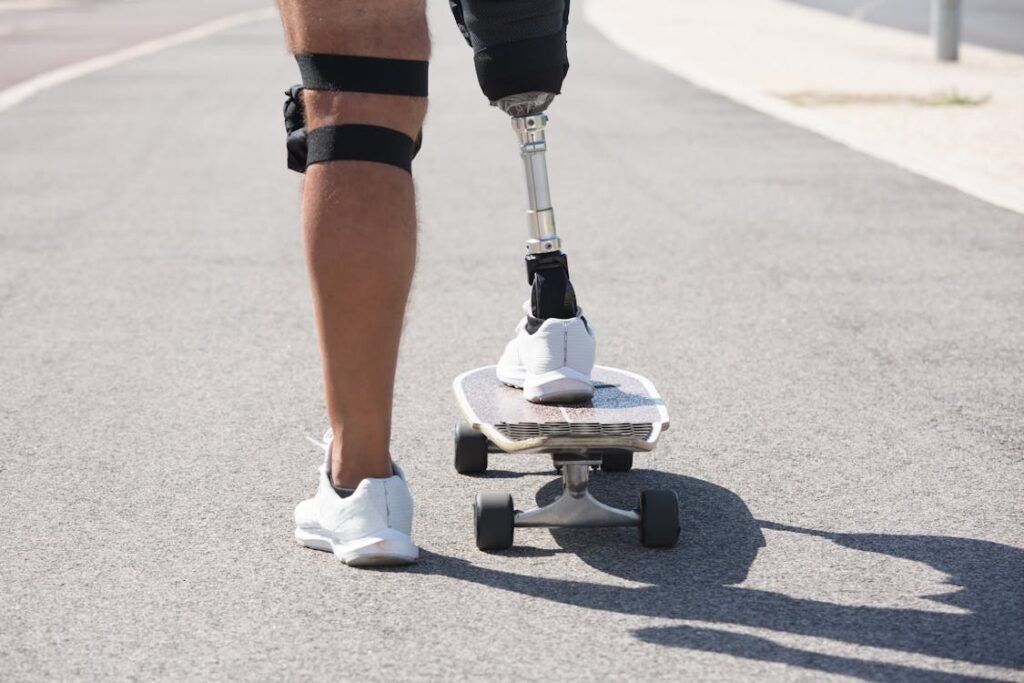
Role of the Surgical and Rehabilitation Team
How Surgeons, Prosthetists, and Therapists Decide When It’s Time
One of the most important aspects of a successful prosthetic fitting is having the right team guiding the process. The decision about when to fit a prosthetic is never made by just one person — it’s a shared decision, shaped by medical knowledge, physical progress, and emotional cues.
The patient, the surgeon, the prosthetist, and the rehabilitation therapist all work together to ensure the timing is just right.
After amputation, the surgeon’s first job is to manage the wound and promote safe healing. They focus on preventing infection, ensuring the limb has proper blood flow, and shaping the residual limb in a way that supports future prosthetic use.
At each follow-up visit, the surgeon checks for complications such as delayed healing, tissue death, or nerve pain. These issues must be resolved before moving forward.
As healing continues, the prosthetist enters the picture. This specialist plays a central role in evaluating whether the limb is suitable for a prosthetic. They look at size, shape, firmness, skin condition, and movement.
A good prosthetist also considers the patient’s daily lifestyle, strength, and long-term goals. At Robobionics, we work closely with patients from the early stages — often before the limb is ready — so we can guide exercises, monitor progress, and build trust.
Meanwhile, the physical therapist monitors strength, balance, and coordination. These skills are essential before someone begins using a prosthetic.
The therapist may also teach pre-prosthetic training exercises that improve posture, core stability, and gait. When patients are actively engaging in therapy and showing progress, it’s a good sign that they’re ready to start prosthetic training.
Together, these three professionals — the surgeon, prosthetist, and therapist — create a timeline based on healing milestones. There’s no fixed number of days or weeks.
Instead, they rely on clear signs: wound closure, limb shaping, skin health, mental readiness, and strength gains. If any of these areas still need work, the team adjusts the timeline.
What makes this team-based approach so effective is that it centers the patient. No one is pushed too fast. At the same time, no one is left waiting without a plan.
Everyone involved has a shared goal — not just to fit a limb, but to ensure it becomes a tool for freedom and confidence.
In modern rehabilitation, especially with the advanced support systems we offer at Robobionics, this collaboration has transformed outcomes.
Patients are walking sooner, healing better, and feeling stronger — not just because of technology, but because of teamwork. That’s the true secret to choosing the right time to fit a prosthetic: knowing you don’t have to figure it out alone.
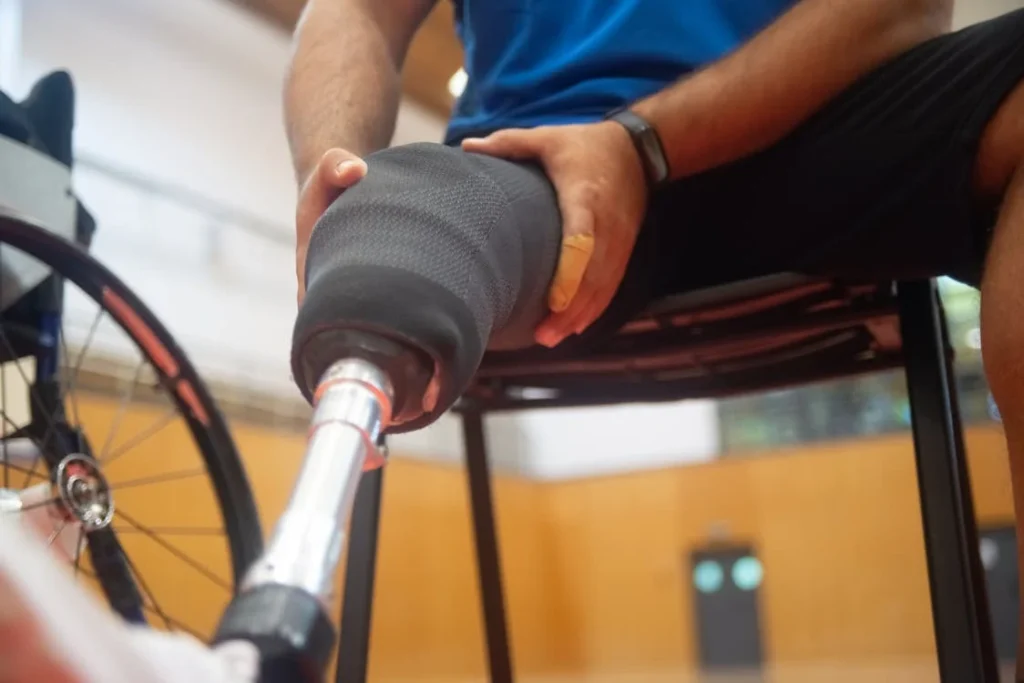
Common Complications That May Delay Fitting
Knowing the Roadblocks Before They Happen
While many patients move steadily through recovery after amputation, others face unexpected delays. It’s important to understand that setbacks do not mean failure — they’re part of the healing journey.
However, knowing what complications might slow down prosthetic fitting can help patients stay informed, take precautions, and seek timely help.
One of the most common issues is infection. Surgical wounds, especially in cases of diabetes or poor circulation, are at risk of infection if not cleaned and managed properly.
Even a mild infection can keep the wound open longer or cause swelling that interferes with limb shaping. In serious cases, further surgery may be required to clean or revise the wound, delaying prosthetic readiness.
Another complication is excessive swelling or poor limb shaping. If compression garments are not used correctly, or if a patient is too sedentary, the residual limb may stay puffy or develop uneven muscle tone. This makes it difficult to fit a socket comfortably. Persistent swelling also increases pain, which can lead to hesitation in trying the prosthetic.
Phantom limb pain is another factor that can affect timing. While many patients feel tingling or sensations in the missing limb, others experience sharp, chronic pain that makes wearing a prosthetic unbearable.
If phantom pain is severe, it must be addressed through medication, therapy, or alternative techniques like mirror therapy before prosthetic training begins.
Skin problems are also a frequent roadblock. Sensitive, fragile skin can blister or break down with even small amounts of pressure. If the residual limb is dry, cracked, or prone to sweating, it can lead to fungal infections or rashes. These conditions must be healed before a socket can be worn safely.
Poor muscle strength is another hidden issue. Even if the limb looks ready, weak hips, back, or core muscles can lead to imbalance and falls when using a prosthetic.
Patients who do not follow through with physiotherapy may find the device difficult to use and get discouraged quickly.
Emotional health can also slow progress. Some patients feel depressed, anxious, or disconnected from their new reality. If they haven’t processed the emotional aspects of limb loss, they may resist prosthetic use, even if their body is ready.
Therapy and peer support can help overcome this barrier.
At Robobionics, we approach each patient as a whole person, not just a limb. We know that the path to fitting is not always straight — and that’s okay.
What matters is staying aware, asking questions, and working closely with your care team. Most complications can be treated or managed with the right strategy. Delays are not the end — they’re just detours. And with the right support, every patient finds their way forward.
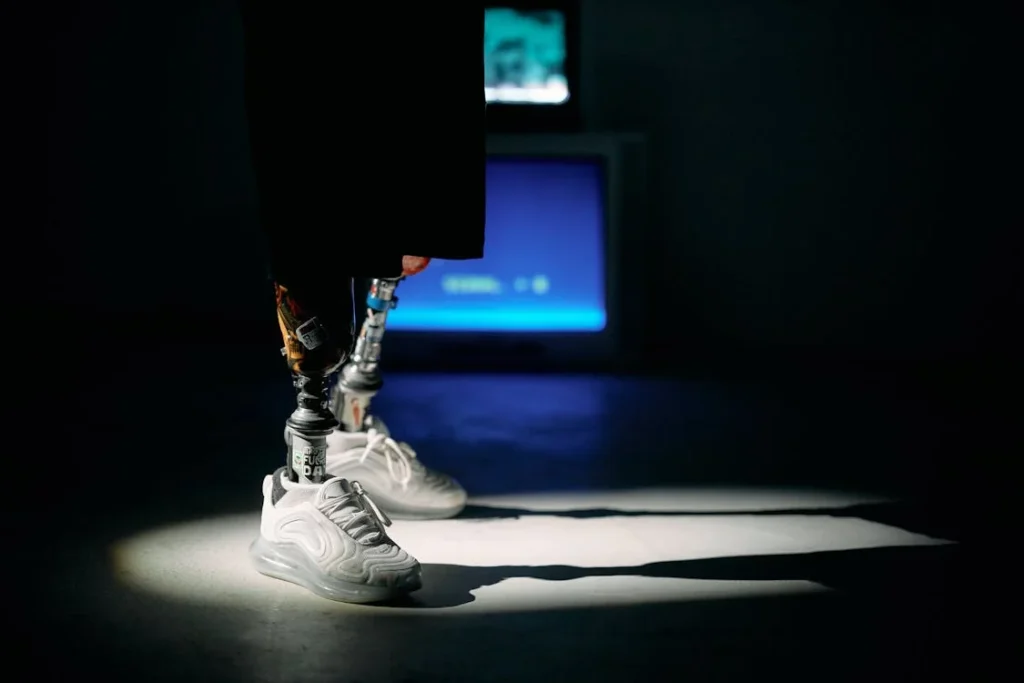
Real-Life Journeys: What Patients Teach Us About Timing
Learning from Experience, Not Just Textbooks
No two patients are the same. Every body heals at its own pace. Every person copes with change differently. That’s why real-life recovery journeys are often the best teachers.
At Robobionics, we’ve had the privilege to work with people from all walks of life — farmers, teachers, athletes, parents, and teenagers — and each story gives us new insight into the right time to fit a prosthetic.
One story that stands out is that of a 32-year-old man who lost his leg in a traffic accident. Physically, his wound closed within three weeks. He was strong, motivated, and eager to get back to work. From a medical perspective, he could’ve been fitted early.
But emotionally, he was hesitant. He was afraid people would stare. He hadn’t yet told his friends what had happened. Instead of pushing forward, we worked with him on emotional coaching, helping him build confidence.
Two months later, when he did take his first step with his new limb, it was not just smooth — it was joyful. His emotional readiness made all the difference.
Another case involved a retired woman in her sixties who had a below-knee amputation due to diabetes. Her healing was slow, and swelling persisted longer than expected. Instead of rushing the process, her team took time to carefully shape her limb with compression therapy and exercises.
When her fitting finally happened, the limb was stable and her socket fit beautifully. She now walks daily in her garden and attends community events again — something she feared she would never do.
We’ve also worked with young patients who wanted to be back on their feet the day after surgery. One 17-year-old insisted on beginning prosthetic trials just two weeks after amputation.
His energy was incredible, but his limb was still too tender. We used an interim prosthetic designed for early weight-bearing, helping him channel his enthusiasm without risking injury. Over time, that early engagement made him one of the most adaptable patients we’ve seen.
What these stories reveal is simple: there’s no one-size-fits-all timeline. Instead, there’s a shared truth that preparation — physical, emotional, and mental — always pays off.
The patients who do best are not the fastest. They are the ones who are supported, listened to, and guided patiently through the process.
At Robobionics, we believe these stories should shape how the industry talks about prosthetics. Textbooks can explain muscles and sockets, but people — real people — show us how healing truly works.
Their courage, their setbacks, and their victories remind us that timing is not just a calendar date. It’s a readiness that grows within the person. And when that moment arrives, the first step feels right — not rushed, not late, but perfectly timed.
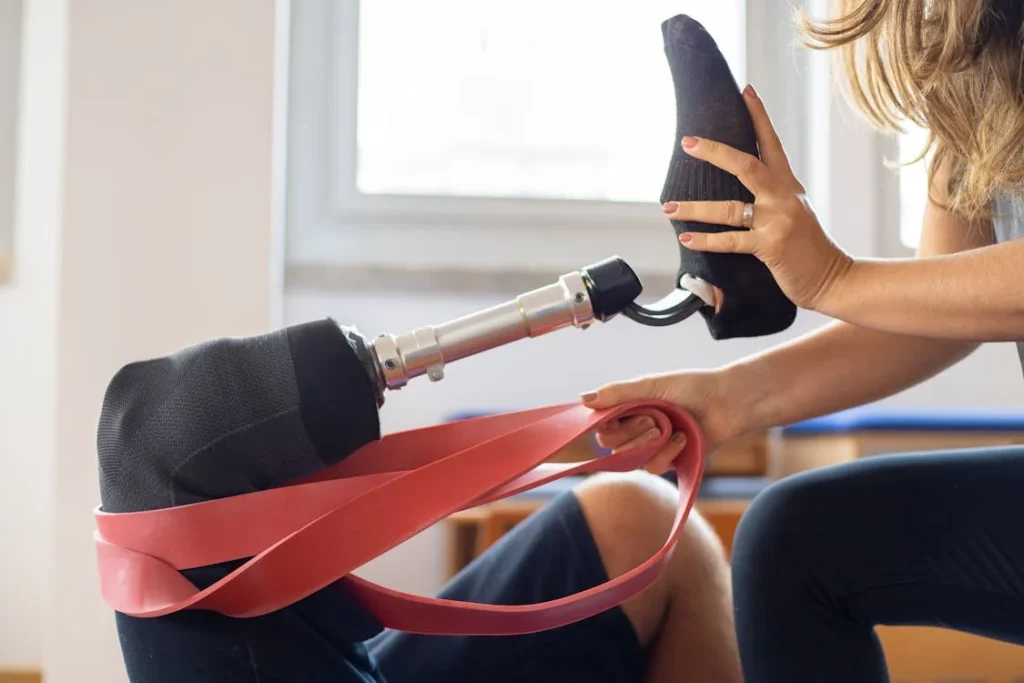
How Modern Prosthetic Technology Supports Healing
Designing Devices That Move With the Body — and the Recovery Process
In the past, prosthetic fitting required a long wait. Materials were rigid, sockets had to be handmade with little room for error, and patients often endured painful adjustments.
But times have changed. Today, prosthetic technology is designed not only to fit well — but to adapt, to support healing, and to meet the body where it is, not where we wish it were.
Modern prosthetics are built with flexibility in mind. At Robobionics, we use adjustable sockets that can change shape as the residual limb shrinks.
This means we don’t have to wait for months of perfect limb shaping — we can start the fitting process earlier, then fine-tune as the limb changes. This speeds up mobility without sacrificing safety.
We also use lightweight materials that reduce strain on healing tissue. Earlier prosthetics were heavy and stiff, making it hard for patients to practice walking safely.
Now, with carbon fiber, silicone liners, and smart cushioning systems, our prosthetics reduce pressure points and promote even weight distribution — especially helpful during the early transition period.
Another breakthrough is the use of modular components. If a patient’s needs or limb size changes, we can adjust individual parts without remaking the entire device.
This saves time, money, and frustration. It also supports the emotional side of recovery, because the patient doesn’t feel like they’re “starting over” each time something changes.
Advanced limb sensors and alignment tools have also transformed the fitting experience. We can track how pressure is distributed inside the socket, monitor gait patterns, and fine-tune the device with incredible precision.
These technologies allow us to create a better-fitting prosthetic faster — reducing trial-and-error and building patient confidence.
Even in cases where immediate full prosthetic use isn’t safe, we now offer pre-prosthetic solutions. These include temporary training limbs, soft sockets, and mobility aids that mimic prosthetic function.
These tools give patients a head-start on learning balance, posture, and movement — all without compromising limb healing.
This technology is changing the question from “When will I get a prosthetic?” to “How can we help you begin moving today?” It gives us more options. It gives patients more hope. And most of all, it makes the fitting process safer, faster, and more tailored to individual healing.
Modern technology doesn’t replace human care — it enhances it. When the right tools meet the right support team, the path to prosthetic use becomes smoother. Healing becomes a partnership between biology and innovation — and the results are life-changing.
Conclusion
The journey to using a prosthetic limb is not a straight path. It’s filled with curves, pauses, challenges, and breakthroughs. But at the heart of it all is one simple truth: timing matters. Not just medical timing. Not just calendar weeks. But real, personal readiness — where the body, mind, and spirit are all prepared to step forward.
Residual limb healing is more than tissue closing. It’s shaping. It’s strengthening. It’s calming the nerves, softening the skin, and preparing the muscles. It’s also about letting the heart catch up — finding confidence, facing fears, and deciding, “I’m ready.”
At Robobionics, we don’t rush this process. And we don’t delay it either. We walk with every patient — from the first bandage to the first step. We believe that the best outcomes happen not when you push faster, but when you prepare better. Our teams of prosthetists, surgeons, therapists, and emotional care experts work as one — not just to fit a device, but to restore movement, dignity, and hope.
So if you’re wondering when the right time is to fit a prosthetic, start with a different question: “Is my body ready? Is my mind ready? Am I supported?” When the answer to all three is yes, that’s the right time.
And when that time comes, we’ll be here — to build you a limb that fits not just your body, but your journey.



